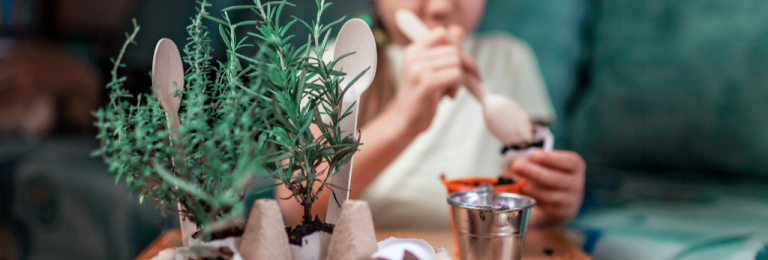Herb Verbiage
Herbs grow in abundance throughout the world, including here in BC, and provide so much fantastic flavour to our food, not to mention adding nutrients and limiting the need for salt. Build children’s food literacy and exposure to different foods by doing an activity with herbs. A good spring gardening activity could be getting children to vote on which herbs to grow in pots or a small garden.
What are herbs?
Herbs are plants with savoury or aromatic properties and can include mint, basil, parsley, cilantro, lavender, rosemary, sage, chives, thyme, dill, oregano and tarragon. Some herbs are used for medicinal properties and should not be given to children.
Here are some activity ideas:
• Place washed bunches of herbs in jars of water or small bowls. Set these out on a table that children can access and place signs at each one with the name of the herb.
• Invite children to smell and/or taste the herbs. Using a large graph on the wall or with paper at the table, have children rate their experience with the herb by putting a ‘√’ or a smiley face or an ‘x’ or a frowny face next to that herb. If the children are interested in smelling or tasting the herbs have them snip off a small leaf using small clean and blunt scissors. This will keep the herbs safe for eating after the activity.
• Use the votes to decide which herbs to grow. Consider planting seeds or starts in pots inside or outside to teach children about gardening and how to bring natural elements into your environment.
• Cook with herbs. Use the favourite herbs to make a dish, like our Baked Tofu, a veggie dip or pesto, an herbaceous salad and so much more!
For more ideas and resources
Check out our post on Gardening with Children
